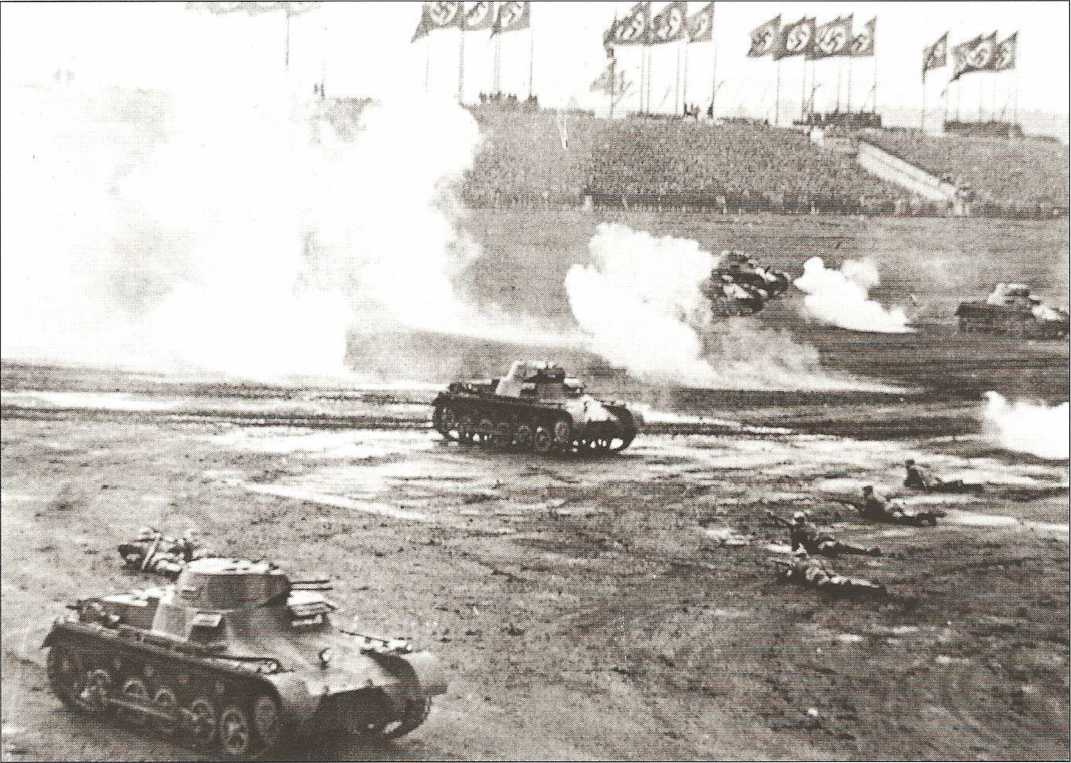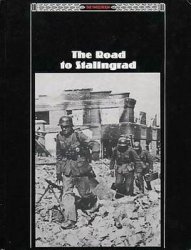By far the most innovative work on armoured warfare was undertaken by the British in the first decade or so after the end of World War I. Considering its shrinking size and budgets, the pioneering efforts of the Royal Tank Corps are quite remarkable. The Experimental Mechanised Force was established in 1927. Between 1927 and 1931 this force.
Below: Panzer Mark 1 tanks on display manoeuvres at a Nazi Nuremburg rally in 1938. After seeing these tanks being demonstrated for the first time, Hitler exclaimed: ‘That’s what I need. That’s what I want to have.’

Despite numerous handicaps, conducted a series of groundbreaking manoeuvres and trials, with increasingly high levels of mechanisation and coordination by radio. However, some sections of the Tank Corps became increasingly tank centred and played down the importance of other arms as they experienced problems with lorried infantry and towed artillery. To quote Colonel Eric Offord: ‘We didn’t want an all tank army but what could we do? The infantry were in buses [i. e. trucks], they couldn’t come with us. The artillery were...obstructive. They never put the rounds where you needed them; and when you called it always came too late.’ The British tank men were more and more inclined to operate tanks on their own, with little regard to infantry and artillery cooperation. This inclination was to cause the British considerable problems in the Western Desert a few years later. Nonetheless, the British were leaders in mechanised warfare, but it was a lead soon squandered as lack of
Finance and traditionalist opposition led to other parts of the army receiving more funds.
At the same time, Britain also produced some of the most interesting writing on mechanisation - Fuller and Basil Liddell Hart being merely the most famous theorists. Fuller, author of‘Plan 1919’, was an out-and-out advocate of full mechanisation and the importance of tanks for the army. He wrote widely on the future role of armoured forces. Liddell Hart was much influenced by the German tactics of 1918 when he rewrote the British infantry training manual directly after the war. After retiring due to ill health, he continued to promote the idea of full mechanisation and highly mobile mixed tank and motorised infantry units as a way of avoiding the slaughter of World War I. Liddell Hart built upon Fuller’s tactical ideas concerning penetrating the enemy’s line, and striking at his headquarters with his philosophy of‘expanding torrents’ which could be applied at the strategic level, the so-called ‘indirect approach’. Guderian was familiar with their work and acknowledges a considerable debt to them in his 1952 work Panzer Leader, where he noted that: ‘Deeply impressed by these ideas I tried to develop then in a sense practicable for our own army.’




 World History
World History









